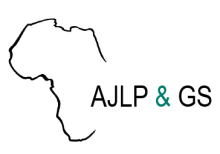Resource information
Soil salinity being a problem of irrigated agriculture reduces the productivity of agricultural land adversely. Detection of soil salinity by conventional means of soil survey requires a great deal of time, but remote sensing data and GIS techniques minimize time consuming and offer the possibility for monitoring and mapping salt affected land. This study assessed and digitally mapped out soil salinity level in Kampe – Omi between the periods of 10 years (2005 - 2014). After sampling and the surface electrical conductivity of the soil (EC) was determined for the samples. The images were geo referenced with obtained imageries using supervised classification method. NDVI vegetation indices were applied for such classifications, thus the study area were classified into High, Medium, and low-saline levels based on reflectance values. The representation gave the results variance of colours, which are still not above the threshold level for saline soils. The NDSI map developed reveals that OL 18 and OL 20 has very low salt content which occupied a total area of 17 % of the area in consideration, which medium saline soils covered 46 % while the high saline soils occupied 7 % of the study area. The extent of the soil salinity level in the study area was found to be lower generally and not highly visible. The study depicted that using remote sensing data and ground data; soil salinity can be monitored and mapped.


